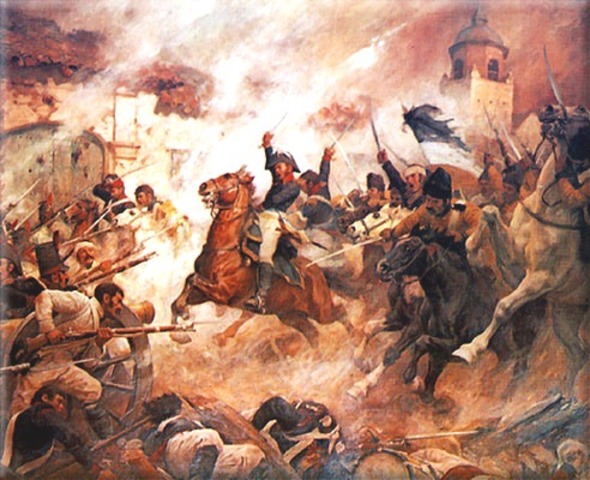 |
| Comuneros’ Revolt |
The comuneros’ revolt was a rebellion against Spanish colonial authority that took place between March and October 1781 in what is now considered Colombia. This rebellion in the Viceroyalty of New Granada was a response by colonists to changing economic conditions.
While some of the conditions were long-standing, many of those that sparked the revolt were a result of the so-called Bourbon reforms
Although the rebellion is sometimes portrayed as a precursor to the independence movement that took place several decades later, its aims were actually rather limited and reformist rather than revolutionary.
  |
The rebels called not for an end to Spanish colonial rule but simply a return to the pre-Bourbon reforms situation in which the Spanish government played a lesser role in colonial affairs. The aims of the rebels can be seen in their slogan— “Long live the King, down with the evil government.” The revolt was notable in that it organized a large number of common people.
The revolt began on March 16, 1781, in the town of Socorro, an important agricultural and manufacturing center in northern New Granada. A crowd led by Manuela Beltrán tore down the posted edict that announced a sales tax known as the alcabala. This tax was part of a package of fiscal measures imposed by the royal official Juan Francisco Gutíerrez de Piñeres.
The measures also included an extension of government monopolies, especially the tobacco monopoly, that restricted the colonists’ production. These policies led to a rise in the cost of foodstuffs and consumer goods and increased the cost of industry for the colonists.
Similar incidents took place in other towns. In Soccoro, colonists elected a común, or central committee, to lead the movement. Furthermore a común represented the idea of a common front of all colonial social groups that challenged the traditional hierarchical society. Members of the elite in Socorro endorsed the movement.
 |
| The comuneros fighting a contingent of soldiers |
Their leader was Juan Francisco Berbeo. The rebels had a number of demands, which included a reduction in tributes and sales taxes, a return of Native American lands, a recall of a new tobacco tax, and the appointment of more Creoles—Spaniards born in the colonies—to colonial government offices.
Berbeo organized a force of between 10,000 and 20,000 people to march on the capital city of Bogotá. The comuneros defeated a contingent of soldiers sent from the capital. In late May the rebels arrived in the town of Zipaquira, just north of Bogotá. At the time, the viceroy was away in the coastal town of Cartagena. Gutíerrez fled. The capital was under the leadership if Archbishop Antonio Caballero y Góngora.
On June 5 the two sides agreed to the Capitulations of Zipaquirá, which contained 34 articles dealing with the colonists’s complaints about the fiscal and administrative aspects of the Bourbon reforms.
   |
However, Spanish authorities secretly signed a document in which they declared the agreement void due to the fact that it had been obtained by force. Once the rebels retreated and dispersed, Spanish royal officials voided the Capitulations.
While Spanish officials granted a general amnesty to the rebels, they enforced obedience to royal authority by sending troops to the rebellious region and reinstated many of the unpopular fiscal measures. Most of the rebels accepted these official actions and returned to their daily lives.
However, a small core of the comuneros headed by the mestizo peasant leader José Antonio Galán continued the fight. In October 1781 Galán was captured. Spanish authorities executed Galán and three of his lieutenants in February 1782.